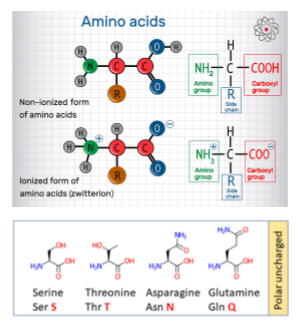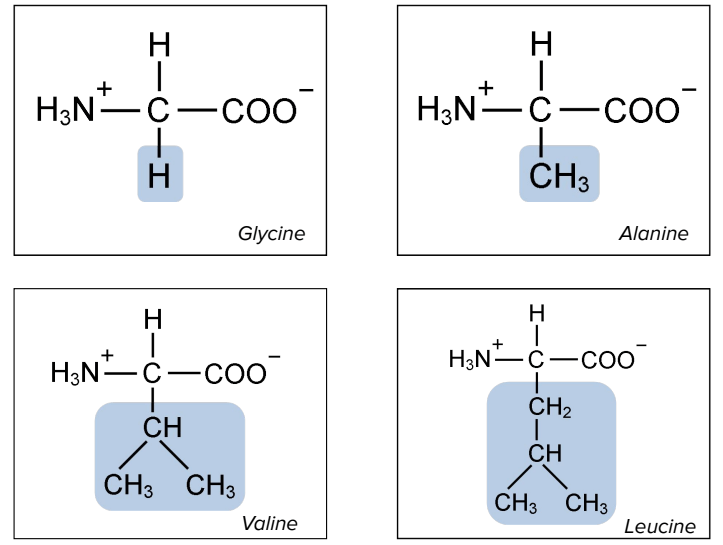
In this interactive activity, students will classify the 20 amino acids based on their chemical properties using cards that display each amino acid’s name. The cards include the chemical formula and side chain (R-group) structure. Recall that each amino acid consists of a central carbon atom, bonded to an amino group (NH2) and a carboxyl group (COOH).
Working in small groups, they will analyze the side chains and sort the amino acids into five categories: nonpolar, polar, positively charged, negatively charged, and aromatic.
The activity promotes critical thinking as students must recognize how different chemical properties influence classification. They will learn to identify which R-groups have which unique properties and become familiar with molecular models.
Groups of Amino Acids
Nonpolar: Hydrophobic amino acids (e.g., glycine, alanine, leucine).
Polar: Amino acids with side chains that are hydrophilic (e.g., serine, threonine).
Positively Charged: Amino acids with basic side chains that can accept protons (e.g., lysine, arginine).
Negatively Charged: Amino acids with acidic side chains that donate protons (e.g., aspartic acid, glutamic acid).
Aromatic: Amino acids with a ring structure in the side chain (e.g., phenylalanine, tyrosine, tryptophan).
Card Sorting and Gamification
Hand out a card with each amino acid’s name, chemical structure, and R-group. The cards already have the R-groups highlighted. Students will then group each amino acid according to their unique properties. You can also turn this into a game, where students “draw” a card property, such as “negatively charged” and each member of the group has to find a card in their hand with that property.
You may also want to give them a handout showing the groups already organized as a reference.
The example below shows 4 of the 20 amino acids. All twenty are included in this PDF file. You can also view the Google slides showing each of the cards as a full page. Note that the cards have the side chains already highlighted.


